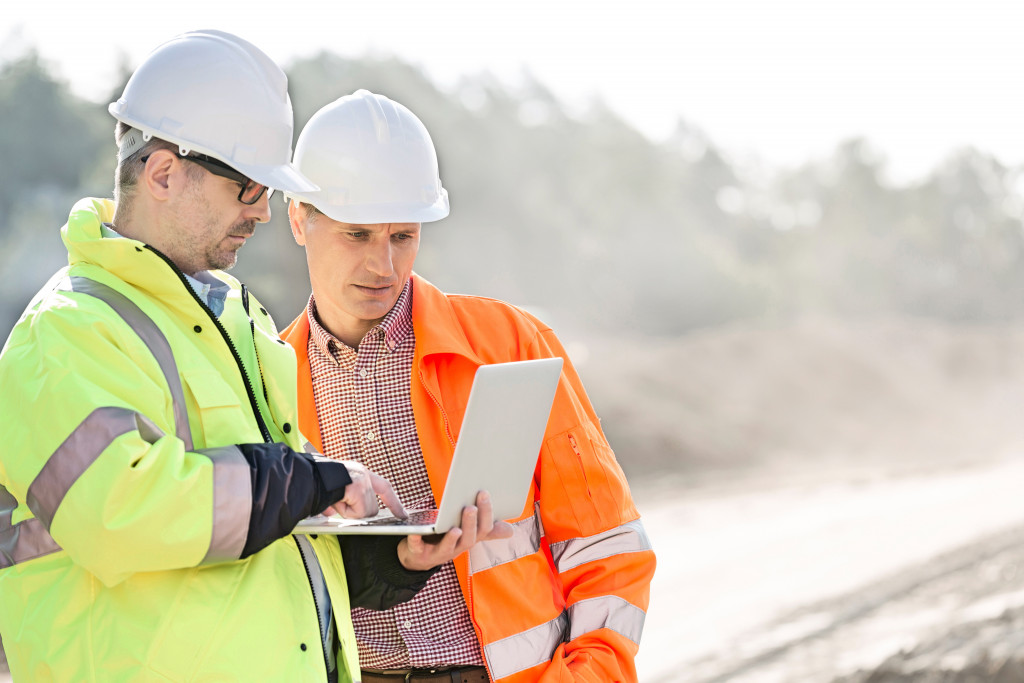As a construction company, you are responsible for ensuring that each project is environmentally friendly. There are many ways to do this, and this article will discuss some of the most important ones.
Understand What Eco-Friendly Construction Means and Its Benefits
The first step in making your construction project eco-friendly is understanding its meaning. Eco-friendly construction is the practice of using environmentally sustainable materials and methods to build structures. That includes using recycled materials, renewable energy, and green building techniques.
There are many benefits to eco-friendly construction. First, it is good for the environment. Using sustainable materials and methods reduces the impact of construction on the environment. Second, it is good for the people who live and work in the structure. Green buildings are often healthier and more comfortable to be in than traditional structures. Finally, it is good for business. Eco-friendly construction projects are often eligible for tax breaks and other incentives.
Internal Revenue Code (IRC) Section 45L
The Internal Revenue Code (IRC) Section 45L allows a maximum tax deduction of $2,000 per unit for single-family and multi-family buildings with three floors or fewer. The building must provide heating and cooling levels of consumption that are not less than 10 percent below national energy guidelines to meet the qualification requirement.
Developers or home builders can claim the credit. A 100-unit apartment project might result in a $200,000 reduction in tax obligations upon approval.
Through December 31, 2032, this initiative has been given a 10-year extension. The tax credit will rise to $2,500 to $5,000 for units that transition to ENERGY STAR standards and are leased out or sold in 2023.
Section 179D Deductions
The Consolidated Appropriations Act of 2021 made the 179D tax deduction permanent after going into effect on January 1, 2006. Any owner of a new or existing building who installs the following and thereby decreases the power and energy cost by half or more compared to the minimum required by ASHRAE Standard 90.1 is eligible for the tax deduction up to $1.88 per square foot:
1) interior light fixtures;
(2) a building envelope; or
(3) cooling, heating, ventilation, or hot water systems.
You must use a computer program certified by the Department of Energy (DOE) to estimate cost reductions (DOE).
Section 48 Investment Tax Credit
According to Internal Revenue Code (IRC) Section 48, some energy-related properties are eligible for an investment tax credit (ITC). The ITC on solar energy is 10%. That was temporarily raised to 30% until 2019, after which it was lowered to 26% until 2022 and 22% by 2023.
Through 2019, investments in small wind turbine-powered property with a 100 kW or less capacity were eligible for the 30% ITC. After that, the credit rate fell to 26% in 2022 and will fall further to 22% by 2023.
A 10% ITC is available for property investments made with geothermal heat pumps, CHP systems, and microturbines. The fuel cell credit is capped at $1,500 for every 0.5 kilowatts of capacity.
A waste energy recovery facility with a maximum capacity of 50 megawatts that began construction in 2021 or 2022 might be eligible for the 26% credit. It must, however, not be a component of a combined heat and power (CHP) system. Those that began construction in 2023 might be eligible for a 22% credit.
For offshore wind properties that start development by the end of 2025, there is an ITC of 30%. For those that start development by the end of 2025, there is an ITC of 30%.

How to Make Your Construction Project Eco-Friendly
Now that you know what eco-friendly construction is and why it is important, you are ready to start doing your eco-friendly project. Here are some tips:
Use Sustainable Materials
Many sustainable materials, such as bamboo and recycled plastic, can be used in construction. Using these materials will reduce the impact of your project on the environment. For instance, using recycled steel instead of new steel can save energy and resources.
Use Renewable Energy
Renewable energy is a great way to power your construction project in an eco-friendly way. For instance, solar panels and wind turbines are two popular options. Using renewable energy to power construction equipment and lights will reduce your carbon footprint and help combat climate change. That will reduce the amount of pollution produced by your project.
Practice Fuel Economy
Make sure to use fuel-efficient vehicles whenever possible during your project. That will help save resources and reduce pollution. Use the smallest equipment possible that meets the needs of each project because they have lower energy requirements and emissions. For instance, the Potain self-erecting crane is perfect for small building projects where maneuvering spaces are tight. You do not need the larger cranes for such work.
Use Green Building Techniques and Educate Yourself and Your Team
Green building techniques, such as using natural light and ventilation, can help reduce the energy use of a construction project. These techniques can also make a structure more comfortable to live and work in.
Make sure you are educated on eco-friendly construction methods and materials. Share this knowledge with your team, so they know the options available to make your project more sustainable. Architects and engineers worldwide continue developing new green building techniques, so keeping yourself and your team updated is important. The more people involved in making a construction project eco-friendly, the more successful it will be.
Make Eco-Friendly Changes in Your Construction Projects As Needed
Eco-friendly construction is important for many reasons. By following the tips above, you can ensure that your construction project is eco-friendly and sustainable. That will benefit the environment, your business, and the people who live and work in the space you create.

